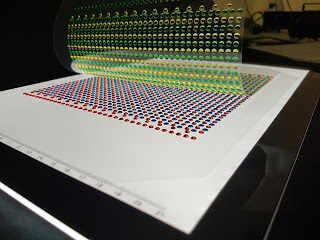Bioprinting Industry Highlights of Q1 2018

Cell-laden hydrogel microgrids x New Methods A team from the University of British Columbia (UBC) Okanagan campus has developed a new technique called direct laser bioprinting (DBLP), which allows researchers to print living tissues instrumental to cancer research. This method entails utilizing a laser diode to photo-crosslink at a wavelength of 405 nm, enabling researchers to print artificial tissues at an unprecedented resolution and level of precision [1]. The tissues printed using this method can also sustain living cells with an unparalleled 95% effectiveness, meaning that cells can successfully survive on the engineered tissue structures [2]. The UBC team postulated and determined that DBLP can be utilized in “cell-laden hydrogel microgrids, hydrogel microwells, cell seeding, and cell encapsulation,” [3] adding to its appeal as a key innovation. According to lead researcher Dr. Keekyoung Kim, these findings have numerous potential applications, “from helping people sufferi